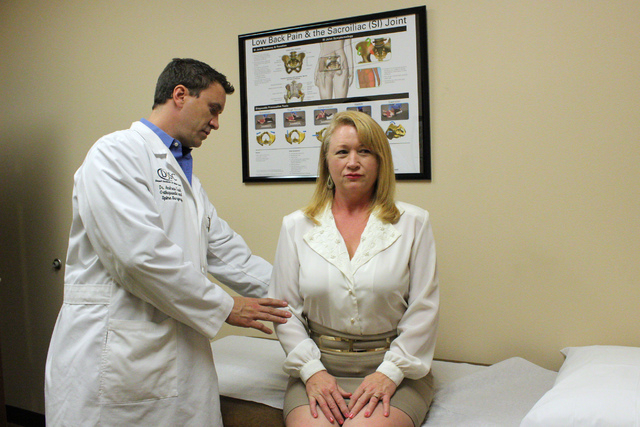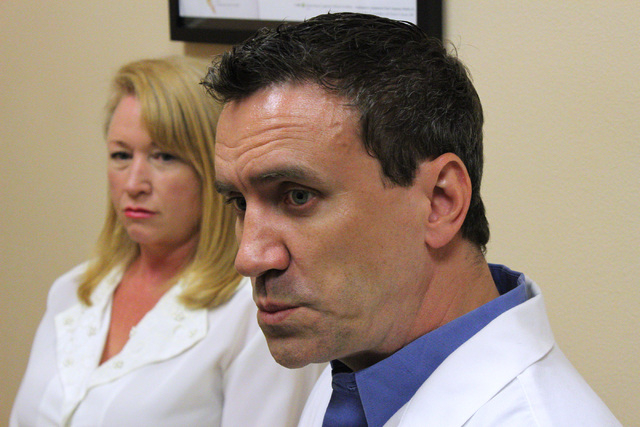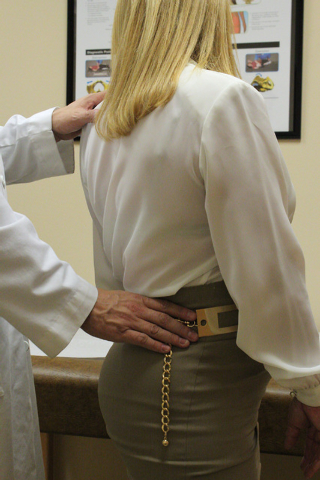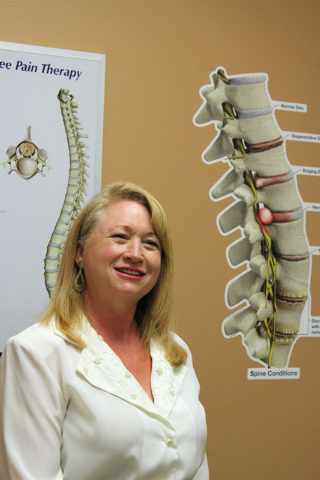Lumbar fusion surgery gives Sunrise woman new lease on life
Surviving a car crash can feel like a miracle, but the process of putting together the pieces of one’s life does not end after the last stitch has been removed.
Sunrise resident Scottie Briscoe, 52, survived such an accident, but she experienced intense back pain, until one day while picking up her grandson from the floor, her back snapped.
At that point even simple things such as walking her dogs or enjoying a movie became an inconvenience. Eventually she became severely depressed.
“I couldn’t stand up straight, and I couldn’t walk very well,” she said. “I was in excruciating pain from my lower back to my legs.”
She was referred to Dr. Andrew Cash, an orthopedic spine surgeon at the Desert Institute of Spine Care, 9339 W. Sunset Road. After a thorough evaluation, he recommended lumbar spinal fusion surgery.
“A friend of mine who had gone to one of his seminars and was very impressed helped me set up an appointment with him,” Briscoe said.
During the surgery, which takes about three hours, two or more vertebrae are permanently connected to improve the overall stability of the spinal cord. It also puts a little more pressure on the other vertebrae, which can accelerate the degeneration process. That is why Cash stresses the importance of proper patient selection.
“The patient has to be experiencing debilitating pain, detriments in their everyday function as a human being,” he said. “A history of the patient’s symptoms is needed to see if it coincides with the physical examination results. Also, investigative diagnostic techniques such as X-rays and MRI are used.”
Recovery usually has three stages. The first is staying in the hospital for three days while the pain from the surgery diminishes. Next, the patient is sent home with a removable brace with instructions to walk as much as possible for two weeks. Finally, the patient goes in for X-rays to make sure the incisions are healing properly and physical therapy begins.
Exercises that strengthen and emphasize the core are at the center of post-operative care.
“If we just did the surgery and no physical therapy, the results would not be optimized,” Cash said. “Physical therapy usually requires two to three months of dedication three times a week.”
Although the procedure is invasive, Briscoe felt assured by Cash’s expertise and the overall benefits the surgery would bring to her life.
“I felt very confident in the procedure because I had talked to Dr. Cash about it,” she said. “I asked him if he could fix my back, and he said he would.”
Cash attributes Briscoe’s successful recovery to her determination and dedication.
“She has been very motivated and dedicated to the regimen we have prescribed,” he said.
Cash conducts follow-up exams every six months to ensure Briscoe is still feeling her best.
She said her back pain is gone and her transformation has come full circle. A year after the surgery, Briscoe has lost 50 pounds and is intent on maintaining the strength in her back. Every day she walks 6 miles and does 200 squats and 300 crunches.
“Like Dr. Cash says, if you don’t use it, you lose it,” she said.
For more information about Desert Institute of Spine Care, visit disclv.com.






















